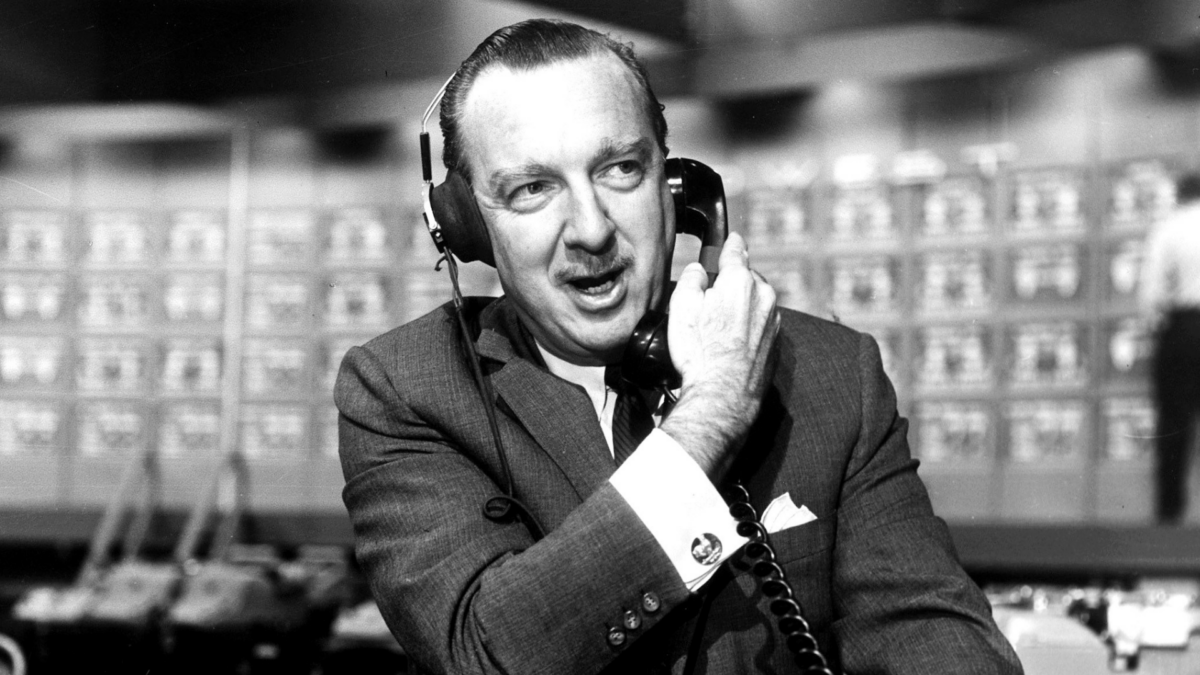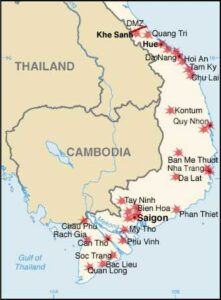In the summer of 2023, I started a series on whether the U.S. could have won the Vietnam War. My initial post examined the political consequences of the U.S. decision to back a coup against South Vietnam’s President Ngo Dinh Diem and how Diem’s assassination disrupted any real chance to create a viable, stable South Vietnamese state. My second examined Lyndon B. Johnson’s fateful decisions about the Vietnam War in the year after JFK’s assassination. My third discussed how the United States military refused to learn lessons and adapt to the war they were really fighting. Now, I analyze how the Tet Offensive, one of the most famous events of the war, was never realistically the opportunity for victory that many modern armchair generals believe it was.
On February 27, 1968, the well-regarded CBS news reporter Walter Cronkite analyzed what he had observed in South Vietnam during the preceding month’s alarming Tet Offensive, a surprise campaign the North Vietnamese initiated to topple South Vietnam’s government. Cronkite’s assessment was damning. He started the broadcast saying that “we have too often been disappointed by the optimism of the American leaders, both in Vietnam and Washington, to have faith any longer in the silver linings they find in the darkest clouds.” Cronkite concluded the U.S. was “mired in stalemate,” with negotiation, rather than military victory, the only viable path to end the Vietnam War. Cronkite’s report was the most influential broadcast about the Tet Offensive, swaying many Americans to question the U.S.’s role in Vietnam and whether it could actually achieve its objective: creating a stable, non-Communist, independent South Vietnamese nation-state.
The Tet Offensive and its aftermath is often viewed as a moment when the U.S. and ARVN (South Vietnamese) militaries could have launched a massive counterattack against the National Liberation Front (NLF/Viet Cong) and North Vietnamese military to win the war. Some military historians even posit that Cronkite’s broadcast, media reports, and civilian leaders’ misperception of the moment wasted the opportunity the U.S. had. However, such arguments ignore important geopolitical factors that limited U.S. military options in Vietnam and the reality that military and civilian leaders in democratic states need to weigh both the domestic and international impact of military decisions. The Vietnam War’s geopolitics and U.S. domestic politics made it improbable that the U.S. could have snatched victory out of a stalemate in 1968.
The Tet Offensive began on January 30, 1968 when both NLF irregular fighters and North Vietnamese conventional forces launched attacks on U.S. and ARVN installations across all of South Vietnam. Virtually no major city was left unscathed; NLF forces even penetrated Saigon’s security perimeter and initiated brutal urban skirmishes with U.S. troops in and around the U.S. Embassy. Tactically and strategically in Vietnam, however, the Tet Offensive was a massive failure for North Vietnam. Historian George Herring, a dean of Vietnam War history, concluded that the NLF’s “regular units were decimated and would never fully recover. Its political infrastructure suffered crippling losses.” Though it drove back its opponents, South Vietnam took a beating, too. It lost 2,300 combat soldiers, 12,500 civilians, and had to respond to the needs of as many as one million new refugees. Moreover, South Vietnamese forces had to withdraw from the South Vietnamese countryside to defend the South’s cities from attacks. This reversed several years worth of work to convince South Vietnamese peasants that the American-backed regime, and not the Communist North, had the competence to govern an independent South Vietnam.
In Tet’s wake, U.S. combat commanders saw an opportunity to capitalize on the NLF’s staggering losses, strike back, and win the war—but not if they had to rely only on the forces currently at hand. The Pentagon requested President Johnson deploy an additional 206,000 troops for service in Vietnam and to organize plans for the U.S. to invade Laos, Cambodia, and North Vietnam to force the North Vietnamese to give up. With just under 500,000 men already on the ground, this would have constituted an approximately 40% increase in troop strength as a requirement for American post-Tet offensive operations. Indeed, though the ARVN did need to regroup from Tet, its field commanders had responded quickly to the crisis and U.S. commanders determined that the ARVN had the capability to launch a counter-offensive of their own.
Such a plan, however, was politically untenable. First, 1968 was an election year and a new deployment of 206,000 troops required new taxes to pay for this operation. Second, reporting on the Tet Offensive had soured American (and Congressional) opinion about the war. It was basically impossible for Johnson to deploy more soldiers to launch an offensive after the U.S. military had been caught flat footed by Tet and Johnson’s public assertions the U.S. had the war nearly won prior to January 1968. Third, invading North Vietnam, Laos, and Cambodia with U.S. forces contradicted U.S. justifications for this war. The U.S. asserted it fought a defensive war to protect South Vietnam from Communist expansion. Invading these other nations would lend credibility to North Vietnam’s assertion that the U.S. had imperialist ambitions just like the French had in the 1950s.
The Tet Offensive’s brutality, and the images of chaos reporters broadcast to U.S. viewers, so rattled congressional leaders that the Senate Foreign Relations Committee forced Secretary of State Dean Rusk to answer detailed, pointed, and aggressive questions about the entirety of U.S. policy in Vietnam. To some military commanders’ frustration, it seemed civilian leaders were wasting valuable time needed to capitalize on the North’s defeat and secure victory. Yet even as they pressured for more troops, Secretary of Defense Clark Clifford’s own military advisors privately expressed doubts that even 206,000 additional soldiers could win the war. It seemed U.S. military commanders only agreed to continue fighting while new polling indicated U.S. citizens believed the nation was stuck in a seemingly never-ending war.
Public reactions to the Tet Offensive seem to suggest that the media and civilian leaders undermined the U.S. war effort just at the moment when the U.S. could have won. That is rather specious, however. First, a democratic state’s wars are political endeavors and issues of governance and public opinion matter just as much as decisions on the battlefield. That’s why, for instance, Lincoln focused intensely on the Army of the Potomac’s campaigns in the theater of war closest to the Union’s seat of government in Washington, D.C. even as Union armies shellacked Confederate forces along the Mississippi River. Confederate success in the Eastern Theater represented the greatest threat to the Union because its capital was there. Similarly, in Vietnam, civilian and congressional opinion mattered because drafted citizen-soldiers fought this war, citizens paid for it, and Congress authorized spending for the military. Moreover, the Tet Offensive, for all its devastating losses to the NLF, did not deliver a knockout blow to the North Vietnamese military. Moreover, military commanders even doubted, privately, that a troop surge could work. In the end, the Tet Offensive set North Vietnam back but did not come close to destroying its forces; it did have to rebuild. The Tet Offensive also damaged Johnson and the Pentagon’s credibility, sowed doubt in both Executive and Congressional civilian leaders about the viability of U.S. policy in Vietnam, and laid the groundwork for the eventual “Vietnamization” of the conflict.
The Tet Offensive’s aftermath did not represent a missed chance at victory. Rather, it was a confirmation of the very reality former Secretary of Defense Robert McNamara had concluded before Johnson relieved him of his position: the U.S. was fighting a war it could not win militarily and did not know how to end without abandoning its goal for an independent, stable, South Vietnam.
Recommended Reading
George C. Herring’s America’s Longest War: The United States and Vietnam, 1950-1975 (5th Edition)
Mark Atwood Lawrence’s The Vietnam War: An International History with Documents

